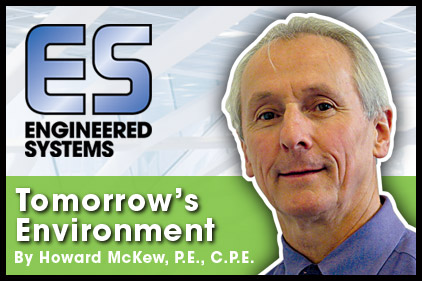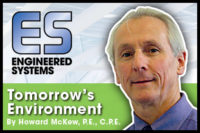Third-party troubleshooting review of problematic HVAC installations can be a profitable business if done correctly. Similar to third-party peer review, this is a niche business requiring a special kind of HVAC engineer with years of technical and hands-on experience. It also requires someone that can be cost-effective in their approach while being sensitive to those who design and/or built the project. The added benefit for the troubleshooting engineer (TSE) versus the third-party peer design review is that most (if not all) the problems have been experienced (not necessarily identified) via occupant complaints and unexpected system shutdowns due to safeties and alarms.
Also similar to peer review, the first thing the TSE must recognize is that she has been hired to identify the problems and make recommendations (TSE Step 1).
TSE Step 2: Have a kickoff meeting with the owner/client before having a meeting with the design and construction team members. This meeting is to hear firsthand what the owner’s issues and concerns are, as well as what his project expectations were. Bring this list to the next meeting, but don’t necessarily share this list; instead, use it as the TSE’s project agenda and to compare what the owner has stated versus what the designers and builders consider to be the problems.
Comment: It is always good to listen to the client without having others interject their thoughts, opinions, etc. This first of several meetings should be strictly a data collection exercise and not a meeting where the TSE person will want to offer any recommendations.
TSE 3: Collect all the contract drawings and specifications, commissioning report, TAB report, and all correspondence associated with the problemsolving up to the TSE professional coming on board.
Comment: The TSE wants to enter the project kickoff familiar with what the HVAC contract scope of work comprised, what was the design intent, and a clear understanding of the original design by following many of the same steps taken by a third-party peer review person (see last month’s column for those tasks).
TSE Step 4: Have a project kickoff with the design team, commissioning engineer, and the prime contract along with the HVAC contractor (and possibly the ATC subcontractor and/or the TAB subcontractor). The purpose of this meeting is to listen to these individuals and what they believe the issues are, and they will quite often have all the answers, which of course would be questionable at best. The TSE person will be able to get a sense of the atmosphere and potential cooperation by the various people in the meeting. The TSE person can ask pertinent questions that may or may not have been asked/considered up to this point, and can do so based on a clear understanding of the contract documents, etc., based on completing step three. Before the meeting ends, it is important to document consensus pertaining to what the problems are.
TSE Step 5: Assuming the TSE person has completed a thorough review of all documents, it is now time to walk the site and complete an inspection of the installation to compare design-to-installed. When doing this portion of the work, photographs should always be taken to document as-built conditions.
Comment: While walking the site, always take note of the opinions being offered and perceptions of how the HVAC system should function, but stay focused on the TSE standardized approach to problemsolving. More often than not, I have found that installing contractors and/or building operators can be a “wealth of misinformation” as it pertains to the design engineer’s intent.
TSE Step 6: Using the system flow diagrams that the TSE person created in step two of this approach, the installation can be reviewed in relationship to what have been considered the building system problems, comparing the HVAC system air and water balancing and automatic temperature control installation and programming.
Comment:The balancing and ATC troubleshooting will be discussed in next month’s column along with other possible HVAC issues and concerns.





